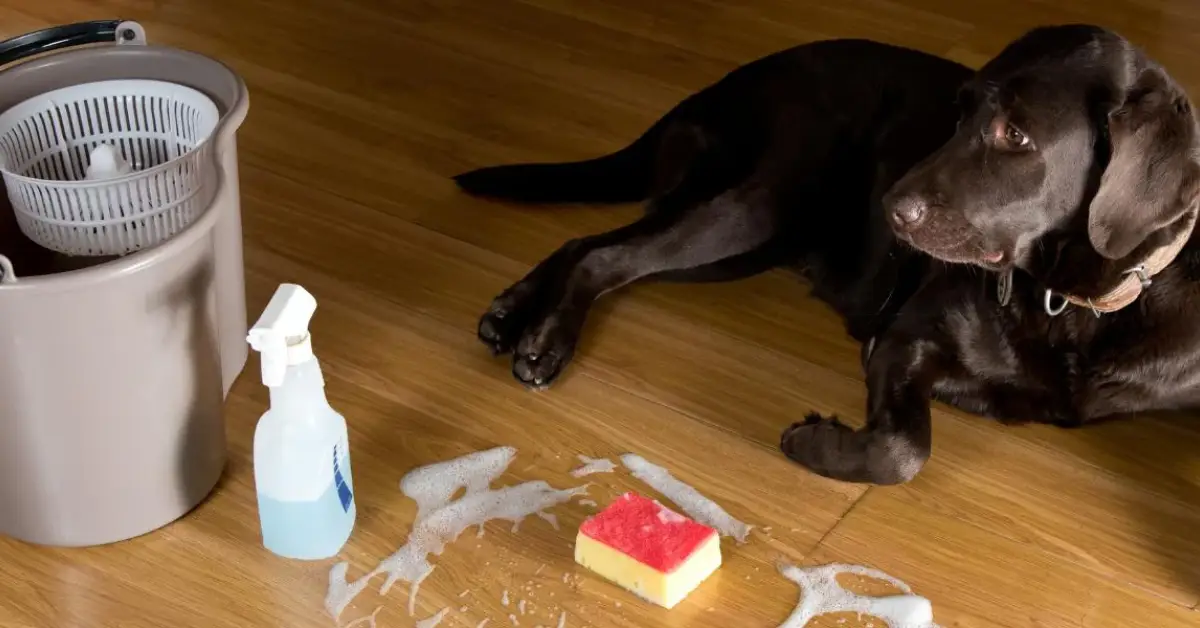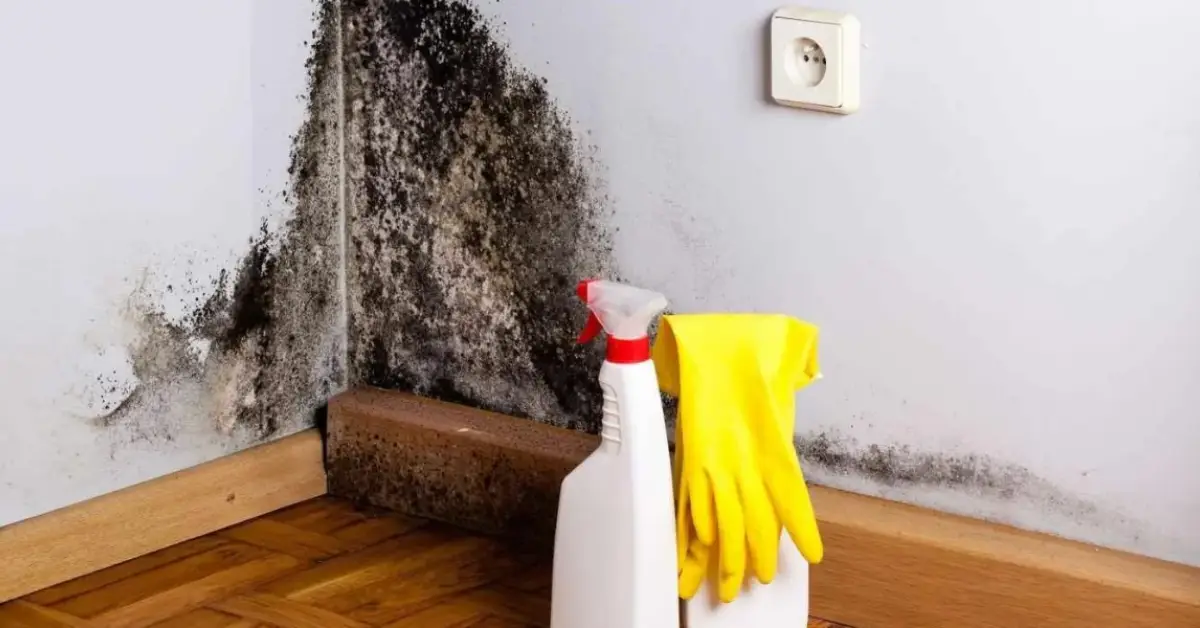Can’t Smell It, But They Can? 4 Home Odors Guests Always Notice
Last month, a friend dropped by my place after work. She smiled, hugged me, and within seconds said, “Did you cook fish last night?” I hadn’t — it had been two days. That’s when it hit me: my home had a smell I couldn’t smell.
If that’s ever happened to you, don’t worry — it’s not poor hygiene or bad luck. It’s science. When you live in a space long enough, your nose adapts to its scent. The same air, fabrics, and surfaces that once felt neutral to you can quietly collect odors that only fresh noses — like your guests’ — can detect.
Most of us don’t notice this “nose blindness” until someone else points it out. And by then, it’s awkward. You can’t unhear a polite “it smells a bit musty in here.” But here’s the good news: once you understand why it happens and where those hidden smells come from, fixing them is simple and surprisingly fast.
In this article, I’ll show you the four home odors you probably don’t smell anymore — but your guests do — and what to do about each one. You’ll learn how to spot them, how to get rid of them for good, and even how to train your nose to notice them again.
So tell me — when’s the last time someone commented on how your home smells?
Why You Can’t Smell What Guests Do
You know that feeling when you walk into someone else’s home, and a smell instantly greets you — fresh cookies, strong detergent, or maybe something a little off? But when it comes to your own house, everything smells… normal. That’s not because your home is scent-free — it’s because your brain has tuned it out.
Nose Blindness / Olfactory Fatigue — The Science
Our brains are built to adapt. After a few minutes of being around the same smell, the olfactory sensors in your nose stop sending strong signals to your brain. Health experts call this olfactory fatigue — or what most people know as nose blindness.
According to Healthline, this happens because your brain saves energy by ignoring “background” odors that seem constant. It focuses only on new or changing smells. That’s why your guest can pick up the faint smell of mildew or leftover curry the second they walk in — while you notice nothing at all.
So if you’ve stopped smelling your dog’s bed or that damp corner in your laundry room, it doesn’t mean it’s gone. It just means your brain decided to stop paying attention.
Quick takeaways:
- The longer you live with a smell, the less you perceive it.
- Nose blindness is normal — not a sign of bad cleaning.
- A fresh visitor’s nose is your most honest feedback tool.
The Guest’s Nose Resets — What They Smell First

Your guest’s sense of smell is like hitting “refresh” on a browser. Their nose isn’t used to your home’s background scent, so the first thing it detects becomes the dominant impression.
Think of it this way — your house tells a story before you ever say a word. When guests step in, they unconsciously pick up cues:
- Air freshness: Is it crisp, stale, or slightly damp?
- Surface scents: Furniture polish, pet dander, cooking residue.
- Lingering odors: Trash, drains, or laundry that’s been sitting too long.
One of the best tricks I’ve learned over the years is what I call the “guest sniff test.”
Try this:
- Leave your home for at least 4–5 hours — or better yet, overnight.
- When you return, walk in slowly and take that first breath like a guest would.
- Notice what you smell first — that’s your “signature scent,” good or bad.
You’ll be surprised how revealing that moment can be.
How Smells Travel — Propagation, HVAC, and Hidden Zones
Even if you clean religiously, odor molecules don’t stay in one place. They ride the air. Heat, humidity, and airflow move them through vents, under doors, and along soft fabrics like carpets and curtains.
Here’s what usually happens:
- Air vents & HVAC: If your air filters are dirty, they recirculate musty air.
- Closed rooms: Lack of circulation traps smells in corners and behind furniture.
- Moisture zones: Bathrooms, laundry rooms, and basements amplify odor spread.
- Soft surfaces: Couches, rugs, and drapes absorb smells like sponges and release them slowly over time.
Once you understand this flow, odor control becomes easier. It’s not about masking smells — it’s about stopping how they move.
Try adding simple habits like:
- Changing HVAC filters every 30–60 days
- Keeping doors cracked open for cross-ventilation
- Using a dehumidifier in damp areas
These small shifts can cut lingering odors before guests ever notice them.
Odor #1: Musty / Moldy Air in Hidden Zones
Why Guests Smell It Before You Do
Musty air is one of those odors you stop noticing the quickest because it creeps in slowly. It starts in places you rarely visit — the basement, a guest closet, or the space behind furniture. Guests, on the other hand, smell it right away because their noses aren’t conditioned to it.
That faint “old house” or “wet towel” scent? It’s usually caused by trapped humidity or mild mold growth.
Detection Methods & Clues
You don’t need fancy tools to find the source — just a bit of awareness:
- Feel the walls: Dampness or stickiness means moisture buildup.
- Look for clues: White or green patches on drywall, dark spots in corners, or peeling paint.
- Use your senses: If a room feels heavy or humid, it’s likely breeding mold spores.
- Optional tools: A basic humidity meter (hygrometer) helps track rooms above 60% humidity.
If you’re still unsure, compare rooms — go from your living area to a guest room or basement. The difference in air quality will tell you a lot.
Fix & Prevention
Once you’ve located the problem, fix both the symptom and the cause:
- Dry it out: Run a dehumidifier or open windows for cross-airflow.
- Clean smart: Mix equal parts white vinegar and water to wipe affected surfaces (test first).
- Replace filters: HVAC filters and dehumidifier trays often trap that musty smell.
- Long-term check: Inspect insulation, window seals, and leaks annually. If you’ve been fighting that damp, basement-like smell for a while, check out our guide on the top 10 causes of musty home odors and how to solve them. It breaks down where these smells start and how to stop them before they spread through your house.
For recurring mold, call a remediation specialist — mold spores can affect air quality and allergies more than you think.
When you stay proactive, your guests will smell clean air — not the quiet story of trapped moisture your house has been holding on to.
Odor #2: Pet / Urine / Organic Stains
The Invisible Residue Trick: Why You Don’t Notice
If you’ve ever owned a pet, you already know — no candle or spray can truly cover that “lived-with-pets” scent. The funny part? You stop smelling it long before your guests do. That’s because the strongest odor compounds from pet accidents (like ammonia or proteins) fade quickly, but the residue stays behind. Over time, it seeps into carpet padding, baseboards, and even hardwood seams.
Your nose adjusts to it, but fresh visitors pick it up in seconds — especially if the air is humid. What you think smells “normal” might actually be a faint blend of fur oil, dried saliva, and old urine.
In short:
- Odor molecules fade faster than residue.
- Residue reactivates with heat and humidity.
- Your pet’s favorite nap spot is probably your guest’s least favorite smell.
How to Find Hidden Spots
Most pet odors hide in plain sight — you just need the right tricks to uncover them:
- Black light test: Dim the lights and shine a UV flashlight across carpets or baseboards. Urine spots glow faint yellow or green.
- Sniff walking: Start at nose level and move slowly through the room — smells tend to rise and settle differently.
- Laundry zones: Check pet blankets, bedding, and fabric couches. These hold scents long after washing.
- Hidden culprits: The underside of rugs, curtain hems, and even closet corners where pets rest.
Doing this every few weeks keeps things from building up again.
Deep-Clean, Enzymatic Cleaners & Ongoing Strategies

Pet odors need targeted solutions — not masking sprays. You’ll get the best results when you neutralize the source instead of covering it up.
Here’s what actually works:
- Enzymatic cleaners: These break down the organic matter causing the odor. Look for formulas labeled for pet urine or organic stains.
- Baking soda treatment: Sprinkle, let it sit overnight, then vacuum thoroughly to absorb lingering smells.
- Steam cleaning: Heat loosens residue buried deep in carpet fibers.
- Regular maintenance: Wash pet bedding weekly, vacuum daily, and replace old pads or litter boxes every few months.
For guidance on which ingredients actually neutralize pet odor molecules, see Pet Odor Solution’s guide on why we can’t smell our own homes. Stay consistent with these steps, and you’ll notice something amazing — your house starts smelling “fresh” again, even to you.
Odor #3: Smelly Bedding, Mattresses, Soft Furnishings
Sweat, Oils & Dead Skin Build-up — Guests Sense It
Your bed might look clean, but it’s quietly storing months of body oils, sweat, and dead skin cells. You’ve been sleeping in that scent for weeks — so your nose stopped caring. But when guests sit on your couch or step into your guest room, they smell it instantly.
The combination of warmth, fabric density, and skin oils creates that faint “used linen” or “stale air” odor. It’s subtle — but it signals neglect.
How to Audit
A quick smell check can tell you more than any detergent label:
- Strip test: Remove all sheets and sniff the bare mattress or couch cushion. If it smells sour or earthy, it’s time for deep cleaning.
- Fabric sniff: Compare the scent of your pillowcase right after washing to one that’s been used for a week. The contrast is eye-opening.
- Vacuum residue: Run your vacuum hose over the mattress and upholstery. If the filter starts to smell, it’s picking up trapped odor.
You can also leave a clean towel on the bed overnight — if it smells stale in the morning, the fabric beneath is the culprit.
Reset the Smell
Getting that “fresh home” feeling back isn’t complicated, it just needs a routine:
- Baking soda refresh: Sprinkle on the mattress or couch, wait a few hours, vacuum it up.
- Steam clean or wash removable covers: Hot steam helps loosen oils and neutralize bacteria.
- Sun exposure: UV light naturally kills odor-causing microbes — air bedding or cushions outside for an afternoon.
- Rotate mattresses: It prevents uneven buildup and extends freshness.
- Seasonal deep clean plan: Every 3–4 months, repeat the process to maintain that crisp scent guests notice right away.
Simple but consistent habits make all the difference — because no air freshener can fake the smell of truly clean fabric.
Odor #4: Kitchen / Refrigerator / Drain / Disposal Ghost Smells
Micro-decay & Hidden Buildup — Why It’s Subtle to You but Harsh to Guests
Kitchen odors are sneaky. They hide behind “normal” smells of cooking — until you step out, come back, and realize your house smells like last night’s onions. Guests don’t have that buffer. What feels like a warm, cozy home to you might hit them as grease, sour water, or stale fridge air.
This happens because tiny food particles and moisture collect in drains, fridge trays, and garbage disposals. Over time, they break down and release volatile compounds that your brain filters out.
Detect
The best way to find where that smell is hiding:
- Closed-room test: Leave your kitchen door shut for a few hours, then walk back in — the strongest smell will reveal itself first.
- Fridge drip pan: Pull out the bottom tray; bacteria love that hidden spot.
- Sink trap: If water sits in your P-trap for too long, it breeds a sulfur-like smell.
- Garbage disposal: Lift the rubber flap — residue often sticks underneath.
- Dishwasher filter: Food bits trapped there can smell even after a wash cycle.
Each of these takes less than five minutes to check, but they’re the top offenders for “mystery kitchen odor.”
Fix
Here’s a mini kitchen odor checklist to reset your space fast:
- Run disposal cleaners or toss in ice cubes with lemon slices to scrub blades.
- Wipe fridge shelves and seals with a vinegar-water mix.
- Clean sink drains weekly with baking soda and hot water.
- Empty the trash daily — even “mild” waste starts smelling after 24 hours.
- Replace fridge drip pans or seals every year to prevent bacterial buildup. And if your trash bins or compost corner still carry lingering smells, you’ll love our simple hacks in Say Goodbye to Bad Odors: 5 Bin Freshening Tricks Every Home Needs. It’s packed with fast, low-cost ways to keep every bin fresh all week long.
- Keep an open box of baking soda in both the fridge and freezer.
A clean kitchen doesn’t just look inviting — it smells like hospitality. Your guests might not notice the scent consciously, but they’ll feel the freshness the moment they walk in.
Odor #5 (Bonus): Closet, Shoe, and Gym Bag Smells — The Sneaky Ones

Why These Small Zones Punch Above Their Weight
You’d think the smallest spaces in your home couldn’t cause much trouble — but that’s exactly why they do. Closets, shoe racks, and gym bags trap moisture, fabric odors, and body bacteria in tight, poorly ventilated spaces. Over time, those smells multiply quietly until one day a guest opens a door or walks by, and bam — there it is.
These areas punch above their weight because the air doesn’t circulate. The same damp sneakers or unwashed hoodie can overpower a whole room once humidity rises. You’ve just stopped noticing it because it happens gradually.
Detection: Isolate and Test
Finding the culprit is simple if you do it methodically:
- Isolate each item: Remove shoes, gym bags, or jackets from the closet and sniff them individually.
- The box test: Place the suspect item in a sealed plastic bin overnight, then open it and smell — if it’s bad, that’s your source.
- Sniff zone test: Step into your closet after it’s been closed for a few hours. If the air feels heavy or sour, it’s time to refresh.
- Check air flow: Make sure closet doors and gym lockers have breathing space — stale air feeds odor buildup.
These quick tests take minutes and often reveal more than expensive sprays ever could.
Fix: Charcoal Bags, Airing Out, and Odor Absorbers
The best cure here is prevention — and a bit of airflow. Here’s a checklist that keeps small spaces smelling clean year-round:
- Charcoal bags or bamboo deodorizers: They naturally absorb moisture and neutralize odors.
- Airing out: Leave closet doors open for 30 minutes a day or after workouts.
- Ozone/UV purifiers: Compact versions safely break down odor molecules without masking them.
- Odor-absorbing sachets: Drop one in each shoe or gym bag. Replace every 2–3 months.
- Rotate items: Don’t let dirty laundry or damp shoes sit overnight.
For a deeper look at how humidity and bacteria drive these smells, check Affresh’s guide on eliminating house odors. Their breakdown of moisture control and material buildup helps you understand why small, closed spaces often smell worse than open ones.
Guest Sniff Test & Odor Audit Walkthrough
If you want to know how your home really smells, you need to step into your guests’ shoes — literally. This simple audit helps you experience your space the way a fresh nose does.
Reset Your Nose
- Leave the house for at least 4–6 hours (go for a drive, a walk, or stay out for the afternoon).
- When you return, pause at the door, take a slow breath, and notice what scent hits first.
- That initial smell — pleasant or not — is what every guest encounters.
Zone Survey
Now move through your home like a visitor:
- Entryway: First impression — shoes, rugs, air vents.
- Living room: Fabric-heavy area — check cushions, curtains, and carpets.
- Kitchen: The smell of old grease or dishwater hides here.
- Bathroom: Moisture, drains, and towels can carry a faint sourness.
- Bedrooms: Bedding, closets, and air circulation make or break freshness.
Note any smell that stands out — even slightly. Your nose will readjust fast, so jot it down before it fades.
Document, Log, and Rank
Give each odor a quick rating on strength (1–5) and frequency (daily / occasional / rare). This helps you track patterns and decide what to fix first.
- 1–2: Mild — fix with basic cleaning or ventilation.
- 3–4: Noticeable — needs deeper cleaning or dehumidifying.
- 5: Strong — likely hidden mold, plumbing, or pet residue; consider professional help.
Keeping a simple odor log makes your home care routine proactive instead of reactive — and ensures you never get caught off guard by a guest’s polite “hmm, what’s that smell?” again.
Maintenance Plan & Odor Schedule
Once your home smells fresh, maintaining it takes far less work than fixing it. Think of this as your odor prevention calendar — small, regular habits that stop buildup before it starts.
Weekly Checks
- Empty trash bins and disinfect lids.
- Wipe sink drains and disposal edges.
- Wash pet bedding and vacuum hair-prone areas.
- Replace kitchen towels and sponges before they sour.
Monthly Deep Cleans
- Vacuum and deodorize carpets and rugs.
- Clean fridge interiors and rubber seals.
- Wash curtains or at least air them outdoors.
- Wipe closet shelves and rotate shoes.
Seasonal Tasks
- Replace HVAC filters every 2–3 months.
- Schedule duct cleaning or at least check for dust buildup.
- Inspect attic, crawl spaces, and basement for moisture or leaks.
- Run dehumidifiers in summer and air purifiers in winter.
These small, consistent steps don’t just keep your house fresh — they extend the life of your furniture, improve air quality, and make every visit feel welcoming.
Because in the end, a home that smells clean feels clean — even before anyone takes a look around.
When to Bring in Professionals (and Why)
There’s a point where home remedies stop working — and that’s not failure, it’s wisdom. Some smells aren’t just stubborn; they’re signals that something deeper needs attention. Knowing when to call in a pro saves time, money, and your home’s health.
Persistent Mold, HVAC, and Plumbing Gas Leaks

If you’ve cleaned, aired out, and dehumidified yet the odor lingers, it’s time to step back. A few signs that professional help is the right next move:
- Musty air that returns within days even after cleaning — likely hidden mold in walls or crawlspaces.
- Burnt or metallic smell when the heater or AC kicks in — could be wiring or HVAC duct buildup.
- Rotten egg odor near sinks or basements — a possible gas leak, which needs immediate attention.
- Pet or urine smell that resurfaces after carpet cleaning — trapped in subflooring or under padding.
These aren’t just comfort issues — they can affect air quality and long-term safety. Bringing in a certified mold, HVAC, or plumbing professional ensures the source is treated, not just covered up.
How to Vet Odor Remediation Professionals
Not all cleaning or restoration companies are created equal. Before you hire, make sure they:
- Offer before-and-after odor tests using air quality meters or VOC readers.
- Provide references from past odor or mold cases, not just general cleaning work.
- Use safe, certified chemicals (look for EPA Safer Choice or Green Seal labels).
- Explain their process clearly — professionals should tell you why the odor formed and how they’re removing it.
- Avoid masking sprays and promise long-term elimination, not just fragrance cover-ups.
Getting expert support when you’ve hit a wall doesn’t mean you failed at home care — it means you’re protecting your investment and your guests’ comfort.
Final Thoughts & Guest-Ready Reset
You don’t need an expensive renovation or an endless pile of scented candles to make your home smell fresh. What really works is awareness, consistency, and a mindset shift — treating scent as part of hospitality.
Here’s your quick Guest-Ready Reset Checklist:
- Air out the home for 15 minutes before guests arrive.
- Run a diffuser or simmer pot with mild natural scents (lemon, cinnamon, vanilla).
- Double-check hidden zones: trash, drains, closets, and fabrics.
- Do a quick “guest sniff walk” from the front door — that first impression matters most.
- Keep one small charcoal bag or odor absorber in each major zone.
When your home smells like care and freshness, guests instantly feel welcome — and you feel proud.
While you’re preparing your space for guests, don’t forget that visual impressions matter, too. Our article on 10 holiday party stains you’ll face and how to remove them fast shows you how to handle those last-minute spills before anyone even notices.
If you’ve ever had that awkward “what’s that smell?” moment, share your story below. What trick finally worked for you?
And if you found this guide helpful, visit Build Like New for more smart, practical home improvement insights that make your space look — and smell — its absolute best.
Disclaimer: This content is for general informational purposes only and shouldn’t replace professional advice. If you suspect mold growth, gas leaks, or structural issues, contact a certified home inspector or licensed technician before attempting repairs or cleaning.


